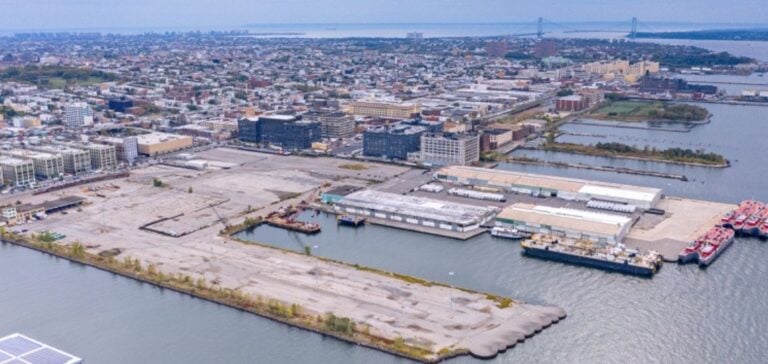Equinor, an oil and gas company that has become a major player in renewable energies, takes a decisive step forward in its offshore wind development in the United States. On Monday, the Norwegian company kicked off work to transform the South Brooklyn Marine Terminal into the operational hub of its giant Empire Wind farm.
Launch of $73 million construction project
Equinor held an official groundbreaking ceremony to mark the start of the redevelopment of the South Brooklyn Marine Terminal. At a cost of $73 million, this vast project will transform the former port terminal into a logistics hub and maintenance base for the Empire Wind 1 offshore wind power project.
East Coast Wind Hub
Once completed, the 73-acre site will become one of the largest offshore wind hubs in the United States. It will house the storage, assembly and maintenance facilities for the Empire Wind 1 wind turbines. A substation will also connect the 810 MW output directly to the New York power grid. Drawing on more than 20 years’ experience in offshore wind power, particularly in Europe, Equinor aims to make the South Brooklyn Marine Terminal a hub for its future wind farms in the region. The site was designed from the outset to support other projects by the Norwegian company.
Empire Wind 1, the first major achievement
With 54 wind turbines planned to be installed off Long Island between 15 and 30 miles offshore, Empire Wind 1 will become the first large-scale offshore wind farm operated by Equinor in the USA next year. With a total capacity of 810 MW, enough to power 500,000 New York homes, this wind farm is just the first stage in the Empire Wind behemoth. Its second phase, Empire Wind 2 (1.26 GW), will bring the combined capacity to over 2 GW, equivalent to the consumption of one million homes in New York State.
By embarking on this multi-billion-dollar project, Equinor is strategically diversifying into renewable energies, while cementing its position as a future key player in offshore wind power in the United States.






















